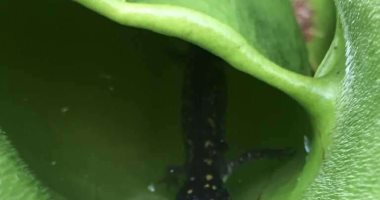Eating a Salmendr .. Discovering a type of plant that deals with meat in Canada

Biologists at the University of Guelph discovered that the carnivorous carnivores in the wetlands of Algonquin Park, Ontario, Canada, consume not only insects but also small salamanders.
According to the Phys website, in a paper published this week in Ecology, the research team reported what Alex Smith, an integrative biologist, called the unexpected state of vertebrate plants in Algonquin Park.
It has been known for a long time that the teapot plants that grow in the wetlands across Canada eat organisms, mostly insects and spiders, falling in their leaves like the bells, and decompose in the rainwater collected there, but so far no one has reported eating this plant for animal Salender.
Smith pointed out how long the park has kept this, although generations of naturalists visit it, and it is close to major cities and the highway that runs across its southern end. The Algonquin Park is very important to many people in Canada.
Some animals have fallen into plants, others have entered plants to escape predators, the researchers said. These animals were trapped inside the leaves, some died within three days, while others lived for up to 19 days.
The prey that is caught within the specialized plant leaves is divided by the enzymes of the plant digestive system and other organisms present in the water contained within the leaf.
Smith said other factors could kill salamanders, including heat, hunger or infection by pathogens, adding that eucalyptus plants may become carnivores for nutrient acquisition, especially nitrogen, which is lacking in nutrient-poor wetlands.
Smith said the discovery of Algonquin Park opens new questions for biologists, including whether the salamander is important to these plants, and whether predatory plants eat amphibians?
Post a Comment